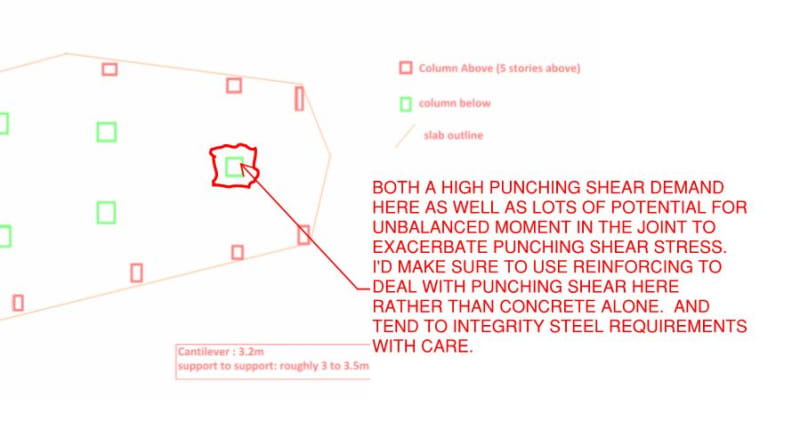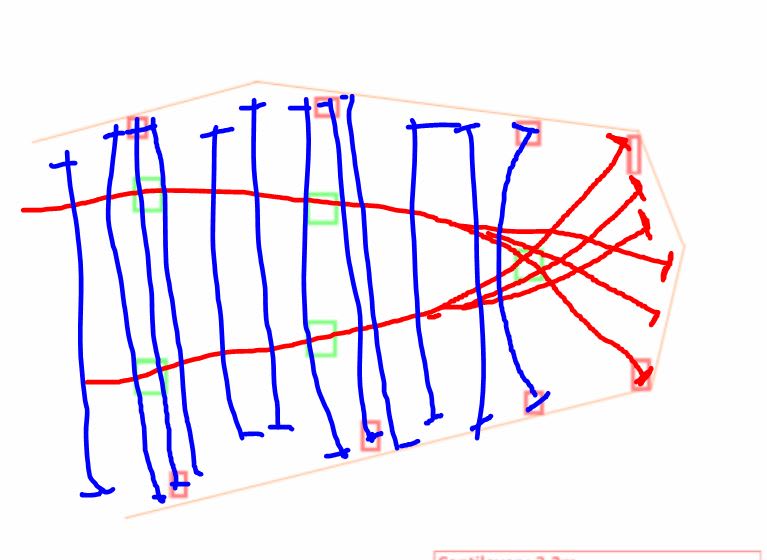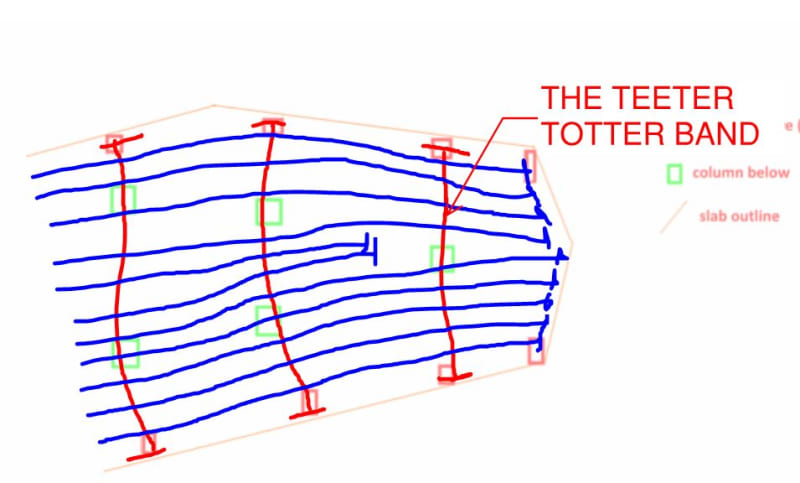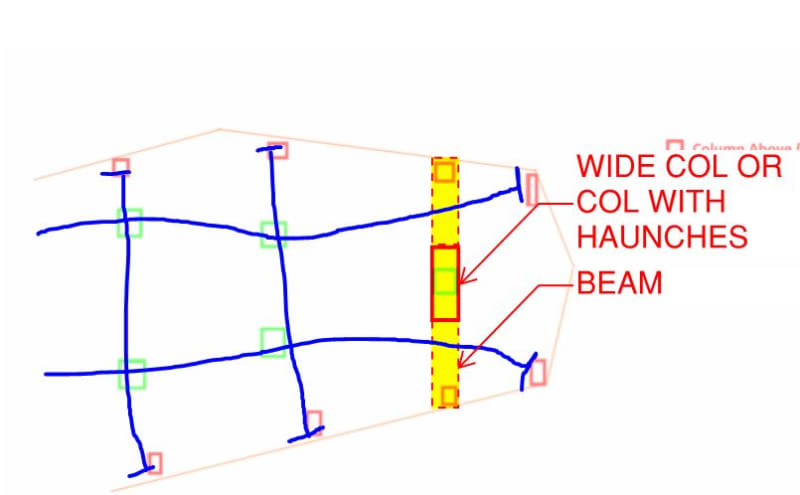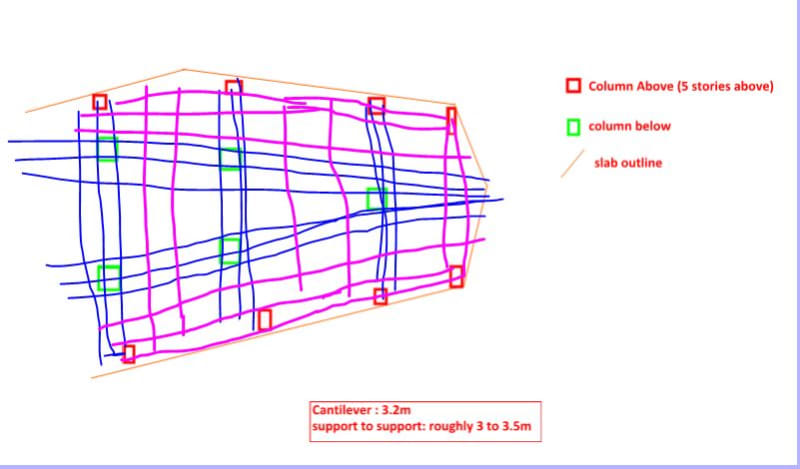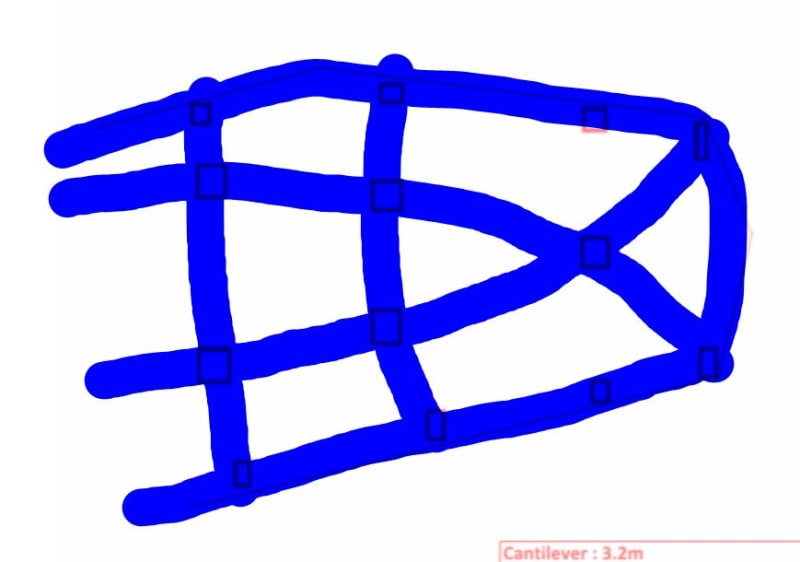I have uploaded a sketch below showing the project I am designing, This transfer slab is going to support 5 stories above. Because there are bedroom above and I couldn't shift the columns above inwards so I have to put them on external and being supported by this transfer slab. The loads of each column above is roughly 200kN (Dead plus Live). Although I am not the one to design the PT transfer slab, I am not comfortable with this arrangement. But at the same time, I cannot shift the columns above 3.2 m inwards. (The columns below cannot move outwards they are on the external already, outside of them are roads)
What is your thoughts on this?
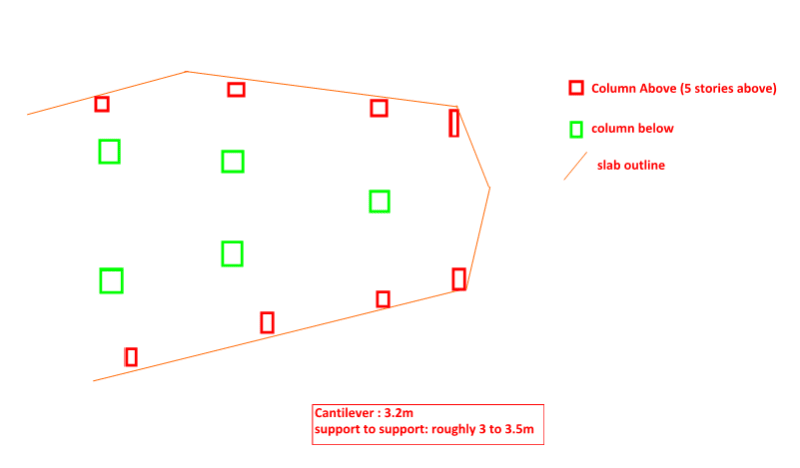
What is your thoughts on this?


